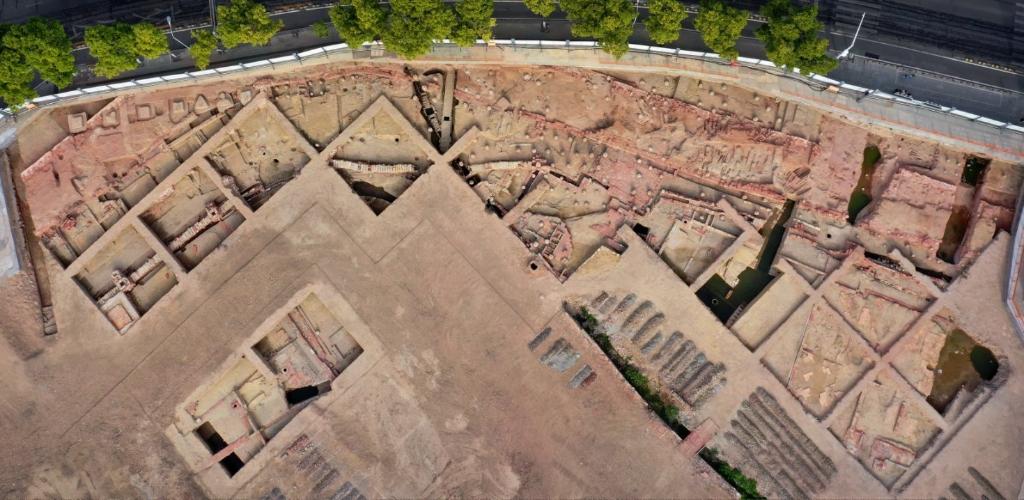On the afternoon of February 25, the Dongguan Municipal Government of Guangdong Province held a press conference to release the archaeological excavation results of the Nanhai Fence Wall ruins and the construction plan for the Nanhai Fence Wall archaeological site.
In October 2023, Dongguan discovered the remains and relics of the Nanhai Cang City Wall and ancient buildings in the city during the Hongwu period of the Ming Dynasty during the cultural relics and archaeological investigation and exploration of the project land. From May to December 2024, the Guangdong Institute of Cultural Relics and Archaeology excavated this site with an excavation area of 3,000 square meters, making it the largest single archaeological excavation project in Guangdong Province in recent years.
 < /p>
< /p>
Panoramic view of the excavation of the Nanhai Acropolis ruins. (Photo provided by Dongguan Municipal Bureau of Culture, Radio, Television, Tourism and Sports)
Cao Jin, director of the Guangdong Provincial Institute of Cultural Relics and Archaeology, introduced that the Nanhaiwei City Wall site has rich cultural relics, and the existing accumulation period lasted from the Song Dynasty to the Republic of China. The base site of the city wall and its supporting roads, drainage channels and other facilities were cleaned up and unearthed during the Ming and Qing dynasties, and important remains such as the base site group of the city and domestic water wells were discovered. A large number of building components and living objects were unearthed from the site, totaling 360 small pieces and 90 boxes of fragments of various utensils.
The most important discovery is the "No. 1 City Wall Foundation" discovered in the west and north of the site. The excavated parts are the northern section of the West City Wall and the western section of the North City Wall. The overall preservation of the city wall foundation is relatively good. OK, the plane is curved and the cleaning length is about 100 meters. The wall is about 7.6 meters wide, and the inner and outer sides are covered with red sandstone strips of stone, with rammed earth intertwined in the middle. The residual rammed earth is about 2 meters high, the layer thickness is 0.08 meters to 0.12 meters, and there are many shells or Broken brick and tile layer. Based on the stratigraphic relationship, building materials and documentary records, it is comprehensively judged that this section of the city wall should be the Nanhai Cang Wall of the Ming Dynasty.
As the core acropolis in the three-level defense system of Guangdong's coastal defense system in the Ming Dynasty, the Nanhai Guard undertakes the dual functions of the military command center and the coastal defense outpost in the Guangdong Central Coastal Defense System. Cao Jin said that the excavation of the Nanhaiwei site has important historical and cultural and academic value. The site confirms the important position of Dongguan as the "first gateway to Guangdong" in the Guangdong military coastal defense system in the Ming Dynasty, revealing the spatial pattern and construction regulations of the coastal defense city in the Ming Dynasty. , is an important achievement in the archaeological research on coastal defense in the Ming and Qing dynasties, and is of great significance to the study of coastal defense in the Ming and Qing dynasties, architectural history, social history, etc.
Chen Zhijun, deputy secretary-general of Dongguan Municipal Government, said that in the next step, Dongguan will take effective protection measures to plan and build the archaeological park of the Nanhai Cang Wall ruins, and strive to promote the protection, inheritance and revitalization of cultural heritage. (Reporters Huang Haoyuan and Xiong Jiayi)




